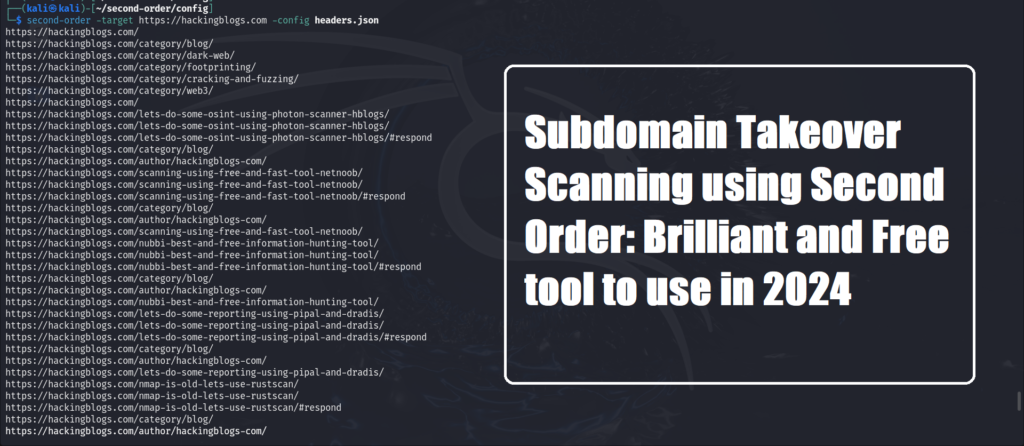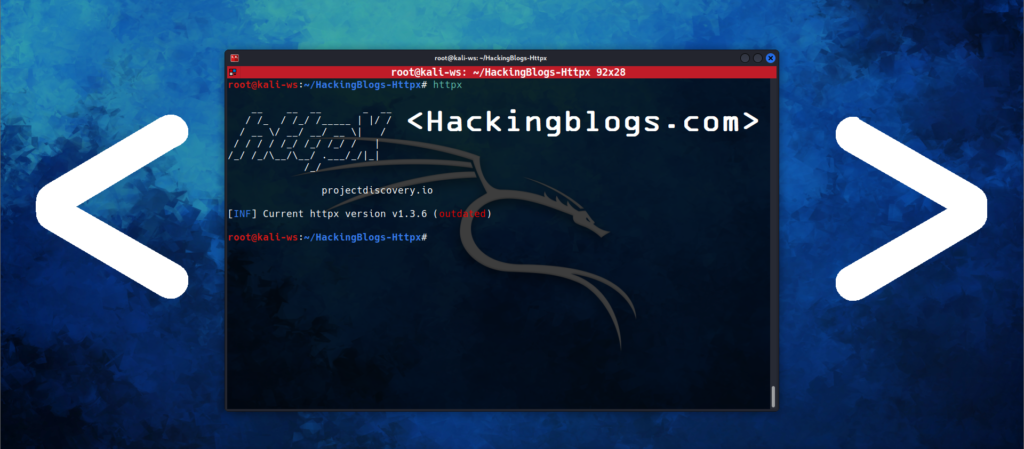Hey Hackers,
Greetings of the day. Today we’ll be learning about another yet important tool that is Second order that will help in detection of subdomain takeover flaws and much more so let us get started.

What is Second Order? Subdomain Takeover Scanning using Second Order
Second order is a tool that is open source written in golang. The tool comprises of various config files that is used while scanning for subdoomain takeover, crawling and collecting sensitive parameters for testing purposes.
So let’s go forward and set this tool on our system
Installing and setting up
So in order to install this tool make sure golang is installed in your system for that use the following command
sudo apt-get install go And to verify the installtion use the version command

go version Well it is installed let’s move to the next step
Cloning Second-Order
So in order to clone the second order repository use the following go command

go install -v github.com/mhmdiaa/second-order@latestThe tool has been successfully installed on the system to verify the installation use the -h switch to check the help menu


./second-order -hUsing Second-Order

Performing scanning : takeover.json
So in order to perform scan on a target site use the following command

./second-order -target https://hackingblogs.com -config config/takeover.jsonHere the takeover.json config file is used to initiate subdomain takeover scanning on the site hackingblogs.
Performing scanning : parameter.json
So we use this config file when we are crawling the site and want to dig interesting paramters on the site this can be done using the following command

./second-order -target https://hackingblogs.com -config config/parameters.jsonPerforming scanning : header.json
So to find the headers (Http headers) we’ll be using the headers.json config file and the command that we’ll be using will be

./second-order -target https://hackingblogs.com -config config/Headers.jsonNow you show me how you will be performing scans to dig javascript from the website
Conclusion
As you see the tool will be helpful for bug hunter in order to find and detect flaws, find paramters etc. The tool offers variety of scanning try to use the other json files and analyse the result, that is it and i’ll come back again.
Keep the fire and Learn. Hacking is an Art and a Hacker is an Artist.
Frequently Asked Questions
Q: What is a subdomain takeover?
A: A subdomain takeover occurs when a hacker gains control over a subdomain of a website that they do not own.
Q: How is a subdomain takeover accomplished?
A: A subdomain takeover can be achieved by exploiting misconfigured DNS records or abandoned subdomains.
Q: What is a second-order tool for hackers?
A: A second-order tool for hackers is a method or technique that allows them to exploit vulnerabilities in a system indirectly.
Q: How does a second-order tool relate to subdomain takeovers?
A: In the context of subdomain takeovers, a second-order tool may involve using a misconfigured subdomain to launch further attacks or gain access to sensitive data.
Q: What are the potential consequences of a subdomain takeover?
A: A subdomain takeover can lead to unauthorized access to sensitive information, website defacement, or the spread of malware.
Q: How can organizations prevent subdomain takeovers?
A: Organizations can prevent subdomain takeovers by regularly monitoring their DNS records, promptly removing unused subdomains, and using secure subdomain delegation practices.
Q: What are some common techniques used by hackers to identify vulnerable subdomains?
A: Hackers may use tools like Sublist3r, SubFinder, or Amass to perform subdomain enumeration and identify potential targets for takeover.
Q: How can organizations detect if they are vulnerable to subdomain takeovers?
A: Organizations can use tools like SubOver or SubOverHeap to scan their subdomains for potential takeover vulnerabilities.
Q: What should organizations do if they discover a subdomain takeover?
A: If an organization discovers a subdomain takeover, they should immediately remove the affected subdomain from their DNS records and investigate the root cause of the issue to prevent future incidents.
Q: Is it illegal to perform subdomain takeovers?
A: Yes, subdomain takeovers are illegal and can result in criminal charges for the hacker involved. It is important to always obtain proper authorization before conducting any security testing on a system.


